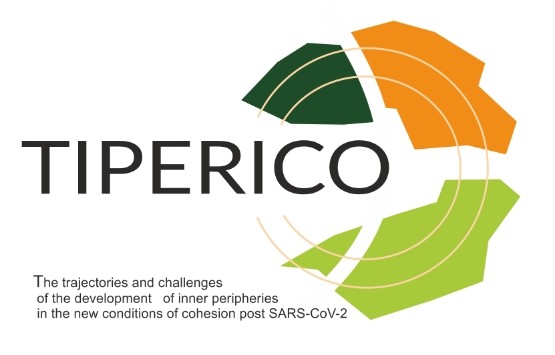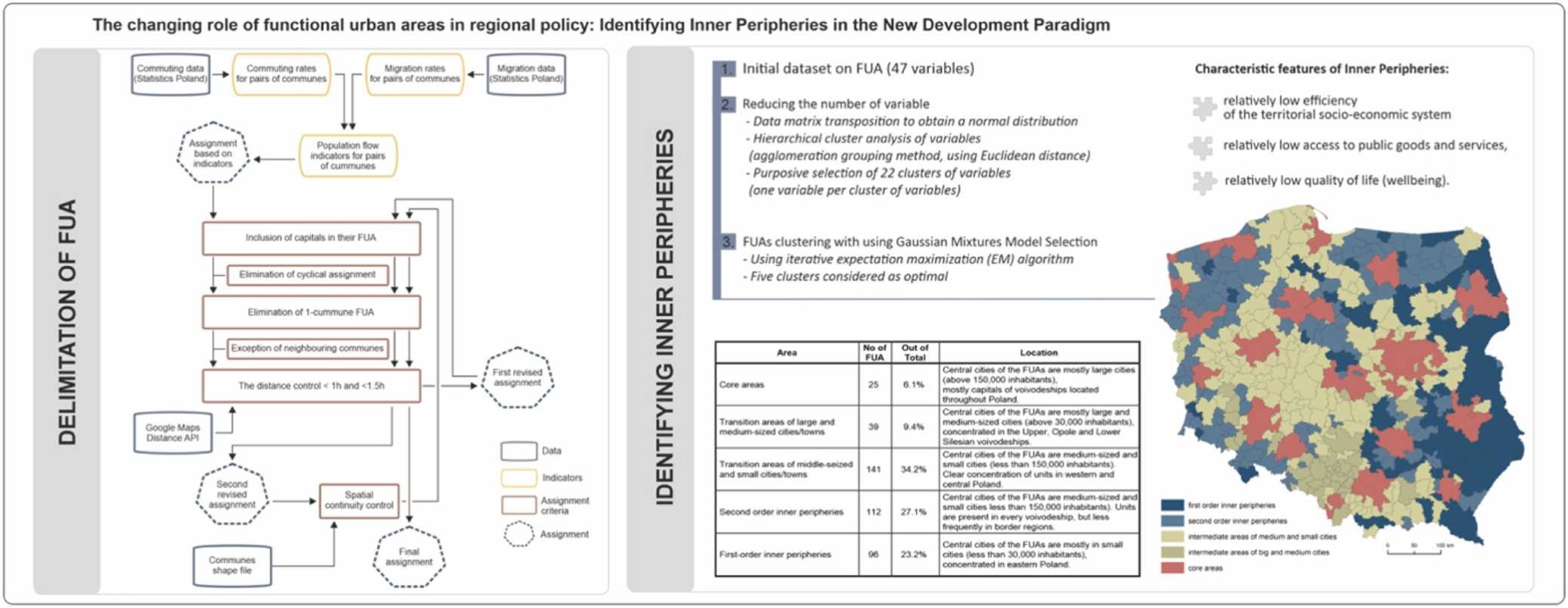Churski P., Adamiak C., Dubownik A., Komornicki T., Pietrzykowski M., Szyda B., Śleszyński P., 2025, The changing role of functional urban areas in regional policy: Identifying inner peripheries in the new development paradigm. Regional Science Policy & Practice, Volume 17, Issue 10, October 2025, 100221.
Pełny tekst (otwarty dostęp): https://doi.org/10.1016/j.rspp.2025.100221
GŁÓWNE WNIOSKI:
- There is a need to tailor regional interventions to the specificity of a given area.
- Functional Urban Areas are suitable for programming regional policy.
- There is a need for new delimitation of Functional Urban Areas.
- Inner peripheries should be a special concern for cohesion policy.
ABSTRAKT: The place-based approach in regional policy emphasizes the need for interventions tailored to local contexts and functional linkages. FUAs serve as essential spatial units, delineating urban-rural interactions shaped by labour markets, migration, and service accessibility. This study advocates for FUAs as key instruments for identifying spatial disparities and guiding targeted interventions. To provide a more accurate representation of functional relationships, we propose a methodology that integrates commuting, and migration flows alongside additional socio-economic and accessibility variables. Computational methods, including hierarchical assignment and clustering techniques, are applied to refine FUA delineation and classification, ensuring a more precise identification of inner peripheries—areas that, despite their proximity to urban centres, remain structurally disadvantaged due to economic, infrastructural, or service-related constraints. These findings have direct policy relevance, highlighting territories requiring tailored public interventions within an integrated territorial approach. Our classification supports the redefinition of regional intervention strategies, reinforcing FUAs as a critical framework for analyzing socio-economic disparities. The precise mapping of functionally integrated areas enables a more effective, place-sensitive allocation of resources. While this methodology is rooted in the Polish context, its modular and adaptable structure allows for application in other countries, provided that data availability constraints are considered. By allowing flexibility in indicator selection, this approach enhances the applicability of FUAs as a tool for territorial governance across different contexts.
SŁOWA KLUCZOWE: Functional urban areas (FUA); Urban region; Delimitation; Functional linkages; Left-behind concept; Local-based policies; Local discontent




